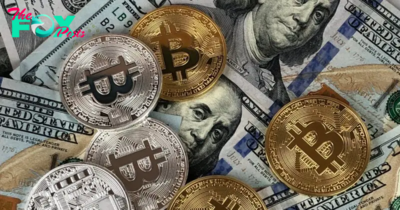Cryptocurrency
FTX Files For Bankruptcy: How Alameda And FTX Blew Up Defending The $22 Price Floor For FTT Coin
FTT, the token at the heart of Sam Bankman-Fried‘s collapsed crypto exchange and trading empire, peaked at around $78 in September 2021 but its founder was unable to sustain interest in a potential firesale last week at $22 a coin, triggering a selloff that ended in a bankruptcy filing.
The native token of the FTX crypto exchange, FTT lost most of its value after rival Binance, the world’s largest Cryptocurrency firm, announced plans to acquire the company.
The coin was trading at around $22 on Nov. 7 but plummeted below $5 within a day, wiping out more than $2 billion in value in 24 hours. FTT is trading at $1.35 as of this writing.
Things got really hot for FTX after a leaked portion of sibling firm Alameda Research’s balance sheet showed the large majority of Alameda assets were denominated in FTT tokens. That triggered a bank run by clients fearful that Alameda and FTX were using FTT as collateral for crypto loans, with $5 billion worth of customer funds withdrawn in a day and lack of liquidity to cover it. Binance CEO Changpeng “CZ” Zhao backed out of the deal.

Black Americans Have the Highest Mortality Rates But Lowest Levels of Life Insurance
Are you prioritizing your cable Entertainment bill over protecting and investing in your family?
Smart Policies are as low as $30 a month, No Medical Exam Required
Click Here to Get Smart on Protecting Your Family and Loves Ones, No Matter What Happens
Because FTX could create FTT out of thin air, it was borrowing against its own coin. When the price was high, it looked like FTX had enough assets in aggregate to cover its liabilities, including FTT. When the FTT price collapsed, their collateral imploded. Knowing this, FTX tried to defend the price by buying FTT as others sold it. Unable to buy it all, they were now using client funds to try to defend the FTT coin —
the final mistake in a series of alleged abuses and mistakes.
FTX used a portion of its profits generated by trading fees to buy back and burn a portion of FTT in circulation, Dr. Akindeinde wrote. So indirectly the FTT token was tied to the profitability of FTX. The more profitable FTX was, the more FTT tokens FTX would buy back leading to an increase in the FTT price and the reverse if FTX wasn’t profitable.
Burning FTT would also lead to a reduced supply, further increasing its price. This made FTT behave somewhat like a company stock but it wasn’t legally a stock, according to Dr. Akindeinde.
There were more than FTT 400,000 holders at the last count.
“It’s fascinating to see that the majority of the net equity in the Alameda Business is actually FTX’s own centrally controlled and printed-out-of-thin-air token,” said Cory Klippsten, a crypto CEO and Bitcoin proponent, in a CoinDesk interview.
FTX tweeted on Nov. 11 that it had filed for Chapter 11 bankruptcy protection in the U.S. and Bankman-Fried has stepped down as CEO. Approximately 130 affiliated companies are part of the proceedings, including Alameda and FTX.us, the company’s U.S. subsidiary.
Bankman-Fried tweeted that none of the problems affected FTX’s U.S. entity, although it was part of Friday’s bankruptcy filing.
Based in the Bahamas, FTX’s offshore status and willingness to keep U.S. traders off its exchange shielded it from strict U.S. laws governing trading and how investments can be sold to the public, Wall Street Journal reported.
But FTX collapse and reports that it used customer funds to back risky venture investments made by Alameda have exposed the company and Bankman-Fried to potential criminal liability, according to white-collar crime attorneys.
Reports that FTX lent customer funds to Alameda Research, which traded on FTX and other exchanges, are being investigated by the Manhattan U.S. attorney’s office, according to people familiar with the matter.
“FTX issued FTT tokens in the first place. So they were getting back what they issued as collateral. Like plugging an extension plug into itself,” wrote Dr. Oluseyi Akindeinde, chief Technology officer at Digital Encode Limited, a leading Nigerian cybersecurity company, in a column for TechEconomy.ng.
“A lot of Nigerians lost money in this debacle,” Akindeinde added.
Using customer funds for proprietary trading or lending them out without an investor’s consent is generally forbidden in the regulated securities and derivatives markets, but such rules are nonexistent in the unregulated crypto market, WSJ reported.
Still, using customer funds for an undisclosed purpose could qualify as fraud or embezzlement, according to former prosecutors and other legal experts. Prosecutors also focus on Bankman-Fried’s tweet last week, later deleted, that FTX was “fine” and customer assets were safe.
Here’s a timeline on how Alameda Research and FTX blew up defending the $22 price floor for FTT coin
Nov. 2: CoinDesk publishes revelations saying that details on the balance sheet for SBF’s Alameda Research trading firm show it’s heavily vested in the FTX exchange’s FTT token.
Nov. 6: Binance CEO Changpeng “CZ” Zhao said he was selling his remaining holdings of FTT tokens, worth about $500 million in what he called a “de-risking” process. Binance held the FTT because it was an early investor in FTX in 2019. When FTX cashed out Binance’s equity stake in July 2021, it paid Binance in FTT. Nov. 6: Caroline Ellis, CEO of Alameda Research, tweets that Alameda will buy Zhao’s FTT tokens for $22 each.
Nov. 8: The FTT token price fell below $22.
Nov. 8: Binance announced a non-binding letter of intent to buy FTX, subject to due diligence, easing the industry panic.
Nov. 9: Binance officially walked away from the aborted FTX deal.
Nov. 10: FTX assets were frozen by the Bahamian regulator.
-

 Cryptocurrency5m ago
Cryptocurrency5m agoThe Incrypted Team Will Host the Online Marathon 2024
-

 Cryptocurrency5m ago
Cryptocurrency5m agoCelebrity Meme Coins, Binance Coin Bull Run and Bitcoin’s Rally: This Week’s Crypto Recap
-

 Cryptocurrency5m ago
Cryptocurrency5m agoHulk Hogan Memecoin Slammed in $17 Million Crypto Rug Smackdown
-

 Cryptocurrency5m ago
Cryptocurrency5m agoSealana’s $3M+ Meme Coin Presale Enters Final Stage as Some Analysts Forecast Big Gains
-

 Cryptocurrency5m ago
Cryptocurrency5m agoCould This New Meme Coin Be the Next Pepe? WienerAI ICO Approaches $5M
-

 Cryptocurrency5m ago
Cryptocurrency5m agoDeFi.Gold and Babylonchain form a Strategic Alliance to Enable Bitcoin Staking and Yield on Other Blockchains
-

 Cryptocurrency5m ago
Cryptocurrency5m agoBotanix's Federated Sidechain Is Bringing Proof of Stake To Bitcoin
-

 Cryptocurrency5m ago
Cryptocurrency5m agoWhy Donald Trump Loves Bitcoin


























